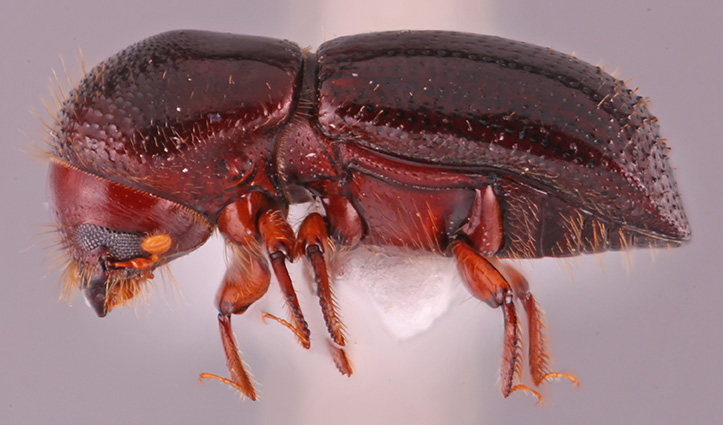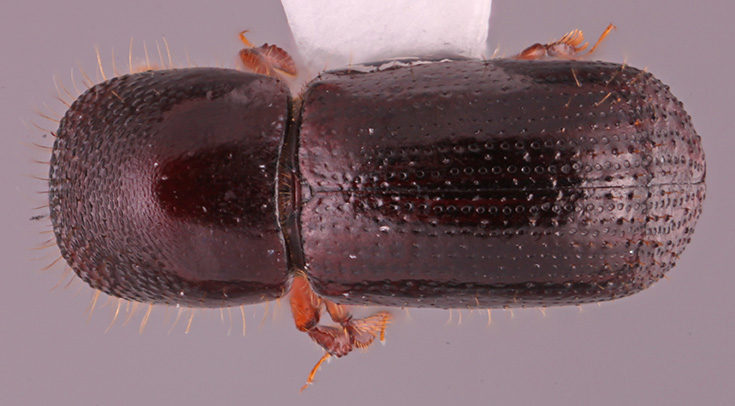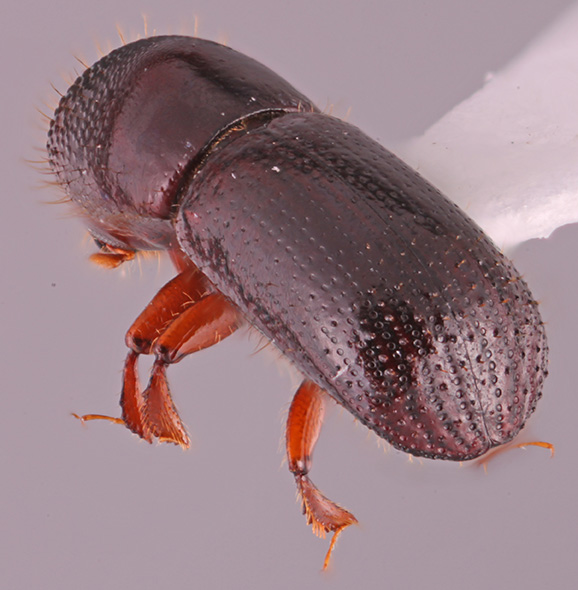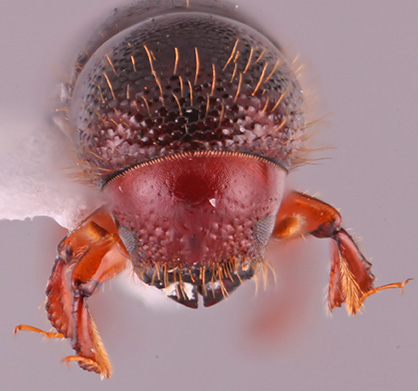Euwallacea sibsagaricus
|
Euwallacea sibsagaricus lateral; S.M. Smith |
|
Euwallacea sibsagaricus dorsal; S.M. Smith |
|
Euwallacea sibsagaricus declivity; S.M. Smith |
|
Euwallacea sibsagaricus frontal; S.M. Smith |
Taxonomic history
Xyleborus sibsagaricus Eggers, 1930: 196.
Euwallacea sibsagaricus (Eggers): Wood, 1989: 173.
Synonyms
Xyleborus dalbergiae Eggers, 1930: 196. Wood, 1989: 173.
Xyleborus tonkinensis Schedl, 1934a: 39. Smith et al. 2020b: 254.
Diagnosis
3.4−3.9 mm long (mean = 3.58 mm; n = 5); 2.77−2.83 times as long as wide. This species is distinguished by its slender form; posterolateralposterolateral:
relating to end of the side part/portion
 margin of declivitydeclivity:
margin of declivitydeclivity:
downward slope of either the pronotum or elytra
 costate and granulategranulate:
costate and granulategranulate:
pertaining to a coarse, grainy surface texture
 , pronotumpronotum:
, pronotumpronotum:
the dorsal surface of the thorax
appearing subquadratesubquadrate:
almost quadrate, with oblique corners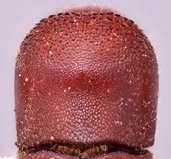 when viewed dorsally (type 3); protibiaeprotibia:
when viewed dorsally (type 3); protibiaeprotibia:
tibia of the first pair of legs
outer margin distinctly triangular bearing five short, broad obtuse denticles; strial punctures approximately the same size on discdisc:
the flat central upper surface of any body part (e.g. pronotum and elytra) and declivitydeclivity:
and declivitydeclivity:
downward slope of either the pronotum or elytra
 ; declivitydeclivity:
; declivitydeclivity:
downward slope of either the pronotum or elytra
 very steep; and declivitaldeclivital:
very steep; and declivitaldeclivital:
pertaining to the elytral declivity
surface strongly shiningshining:
appearing glossy or bright in luster; referring to a surface that is polished and reflects light well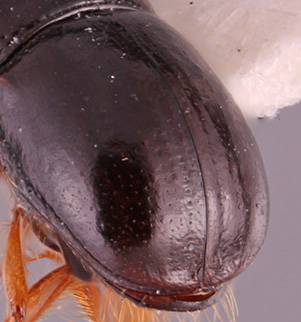 .
.
May be confused with
Euwallacea luctuosus, E. subalpinus, Heteroborips tristis
Distribution
Bhutan, China (Yunnan), India (Arunachal Pradesh, Assam, Meghalaya, West Bengal), Indonesia (Maluku), East Malaysia, Philippines, Vietnam
Host plants
recorded from Casearia (Flacourtiaceae), Ehretia (Ehretiaceae) and Sapium (Euphorbiaceae) (Beeson 1961Beeson 1961:
Beeson CFC. 1961. The ecology and control of the forest insects of India and the neighbouring countries. 2nd edition. Government of India, New Delhi, 767 pp.), and Hevea brasiliensis (Euphorbiaceae)
DNA data
Sequences available for COI and CAD.
COI: MN619945
CAD: MN620226

